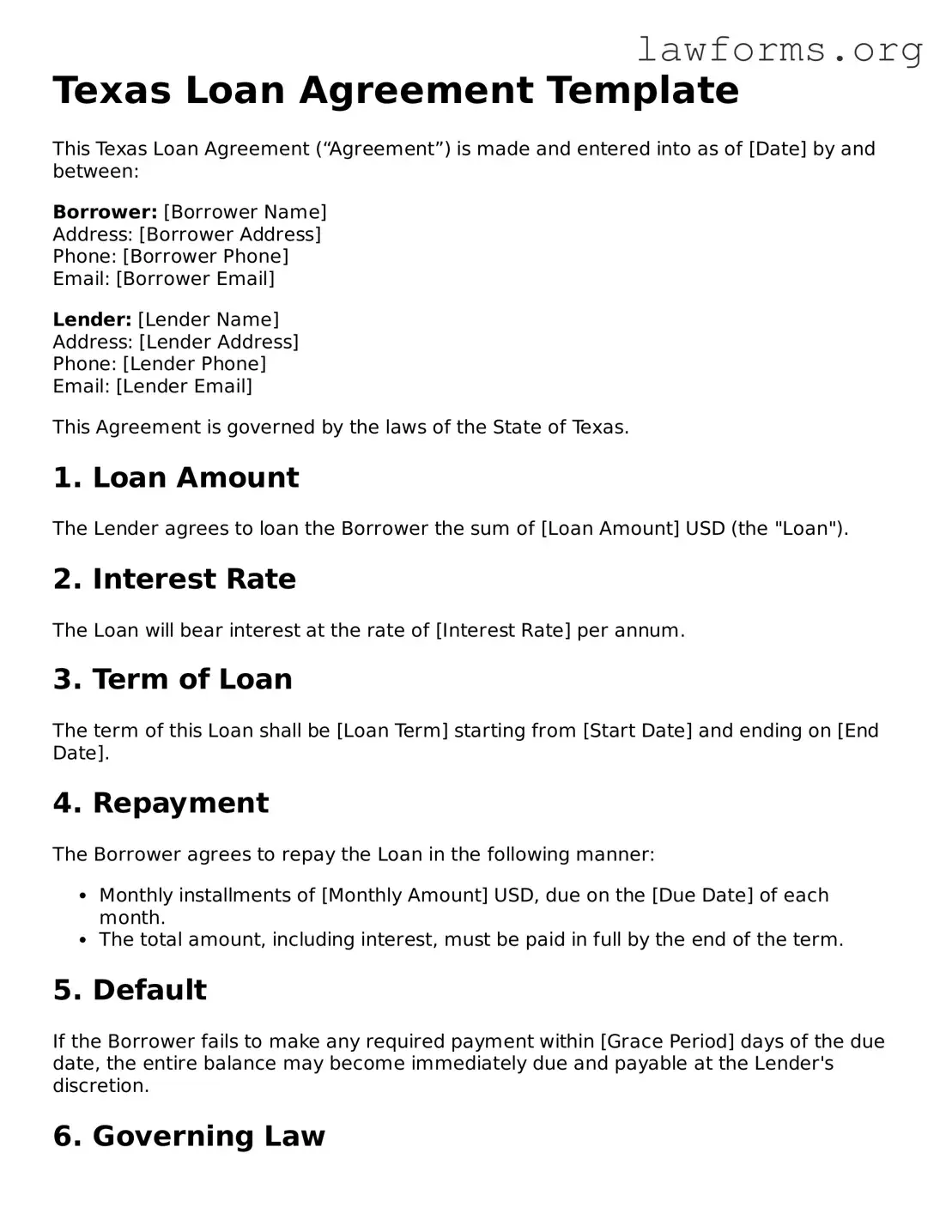Texas Loan Agreement Template
This Texas Loan Agreement (“Agreement”) is made and entered into as of [Date] by and between:
Borrower: [Borrower Name]
Address: [Borrower Address]
Phone: [Borrower Phone]
Email: [Borrower Email]
Lender: [Lender Name]
Address: [Lender Address]
Phone: [Lender Phone]
Email: [Lender Email]
This Agreement is governed by the laws of the State of Texas.
1. Loan Amount
The Lender agrees to loan the Borrower the sum of [Loan Amount] USD (the "Loan").
2. Interest Rate
The Loan will bear interest at the rate of [Interest Rate] per annum.
3. Term of Loan
The term of this Loan shall be [Loan Term] starting from [Start Date] and ending on [End Date].
4. Repayment
The Borrower agrees to repay the Loan in the following manner:
- Monthly installments of [Monthly Amount] USD, due on the [Due Date] of each month.
- The total amount, including interest, must be paid in full by the end of the term.
5. Default
If the Borrower fails to make any required payment within [Grace Period] days of the due date, the entire balance may become immediately due and payable at the Lender's discretion.
6. Governing Law
This Agreement shall be interpreted and enforced in accordance with the laws of the State of Texas.
7. Amendments
No amendment or modification of this Agreement shall be valid unless made in writing and signed by both parties.
8. Acceptance
By signing below, the parties acknowledge and agree to the terms of this Loan Agreement.
Borrower Signature: ___________________________
Date: _______________
Lender Signature: ___________________________
Date: _______________
